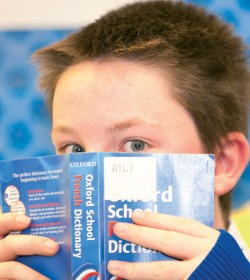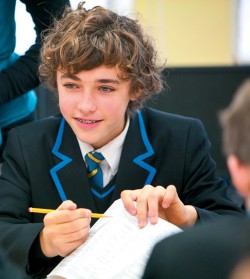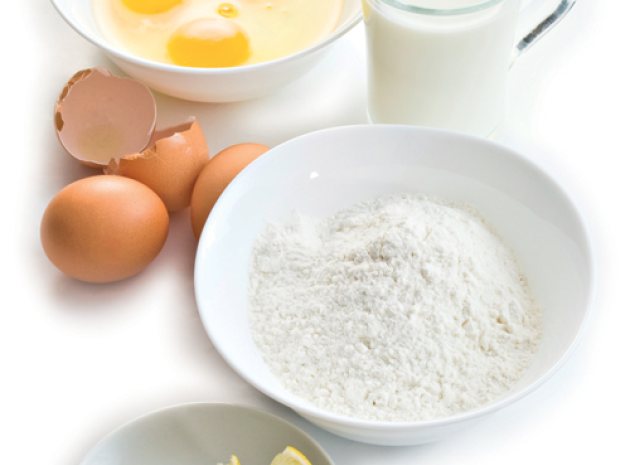Today you will…
Start to appreciate the importance of understanding the function of different parts of speech in a sentence by analysing the ingredients and processes that make up a recipe.
Acquire and/or enhance your dictionary skills and reading strategies so that you can engage with authentic resources.
How well are your students able to manipulate language for their own purpose? Are they able to apply what they have learnt to say what they want – or do they rely on Google translate when it comes to written production or working on a speaking task with, at times, interesting results?
Do they, despite initiatives such as ‘literacy across the curriculum’, still struggle to understand basic grammatical concepts like the difference between a noun and a verb, or between an adjective and an adverb? If the answer is yes, then they are also likely to be less independent as language learners and may well have difficulties in making proper use of tools such as text books, dictionaries, online glossaries and the like. Analysing a recipe, which involves combining ingredients through a series of processes, can be one way of bringing grammatical concepts to life, whilst at the same time developing students’ reading skills and awareness of intercultural understanding through exposure to authentic resources.
Starter activity
You’ll need to find some suitable recipes – looking for texts that are not too complicated but nonetheless have a wide enough range of different types of words. If the target language is French, you can find recipes geared towards children on momes.net. For German, try using the internet portal for children blinde-kuh.de, and for Spanish, a Google search on ‘recetas sencillas para niños’ should do the trick. The ideal recipes would also be something typical of the target language country so that there would scope for some cultural input as well; for example crêpes (French) or Lebkuchen (German).
Start by telling the students that you are going to be looking at the words that make up a text and then show them a selection from the recipe in English (eggs, flour, butter, bowl, frying pan, to beat, to whisk, to pour, whole, warm, melted, carefully, with, in, on, and, to etc.)
Challenge the students to tell you what kind of text it is from the words given (a recipe!) Then get them to come up with suggestions for ways in which these words might be categorised or grouped together. Depending on the nature of the class you may have to prompt them to think about what some have in common with others. They are likely to come up with groups like ingredients, utensils, actions etc – highlight the different categories by using coloured pens on the interactive board.
Next, encourage students to look more closely at why certain words are grouped together – they could for example be asked to identify the ‘doing’ words; which ones can be used to describe the utensil and ingredients; and so on. If the students are familiar with the terminology of noun, verb, adjective, adverb, preposition and so on they may at this stage be able to name each category correctly, but if not they will have to be told that there is ‘technical’ label for different kinds of words!
Main activities

1. Using the book
Hand out dictionaries and encourage the students to explore them. They should be made aware of the abbreviations used to designate different parts of speech (n, adv, adj, vi, vt, conj etc). Draw their attention to other parts of speech that may not feature so prominently in the recipe text (such as pronouns), too, and the abbreviations for this. Allow them plenty of time, especially if this is the first occasion that they have really encountered a dictionary. Next, give students the key words of the recipe from the starter activity in the target language on a set of cards and get them to work in groups to sort them into different categories, using the dictionaries if necessary. Depending on the target language you could get them to look for clues as to how to identify a specific part of speech (e.g. adverbs in French ending in -ment or infinitives in German ending in -en). At this point it would be a good opportunity to reinforce the concept of gender, and remind pupils about how the gender of a noun could affect adjectives. Whilst students are looking at dictionaries it would also be useful to draw their attention to verb tables and to the fact that verbs are listed in the infinitive form in dictionaries, but will change according to the tense/person required. Eventually, show pupils the recipe in full and ask them to work out the meaning of the other words, and categorise them.
2. Grasping the point
Ask pupils to consider why it is important to understand the difference between, for example, a noun and a verb or a noun and an adjective. To get them thinking along the right lines you could show them some images of a number of homonyms e.g. beat (musical) and to beat (e.g. eggs); cool (temperature) and to cool; roll (of paper or bread) and to roll (out pastry/gymnastics) – and get them to realise that some words that are spelt the same can have different meanings according to whether they are a noun, verb or an adjective etc, so when they are looking a word up it’s important to know into what category it falls. Can they think of any further examples? They could be shown what can happen when online translation tools are used and the results are not checked; try typing a nursery rhyme into one of these, translate it into the target language and then back into English! Pupils could then be given some short phrases which have been mistranslated (both English to TL and vice versa) to practise looking up the ‘right’ word in their dictionaries.

3. Demonstrating understanding
The students should then have a further opportunity to show that they’ve understood the difference between various parts of speech, so give them another recipe in the target language in the form of a cloze text. Make sure that the missing words are a mix of different types (adjectives, nouns, verbs, adverbs etc) and that only one type of word could possibly go in the blank; for example the target language recipe might read 1 tablespoon ………., or ………… 200 ml water. First of all get the students to work out what type of word they need to go in the gap and then give them a bank of words, which include the ones needed fill in the blanks.
Home learning
• Give students a short text and get them to highlight different categories of words. They could then find some additional words for each category that are of a similar type to those in the text.
• Students are given a text with some words underlined. They identify what kind of word each one is and then use the text as a model for a piece of writing, adapting it as they go along.
Summary
As a plenary, play a ‘categories’ game with your students. They are given a number of headings (different parts of speech) and a letter is chosen at random. In groups they use their dictionaries to find as many words in the target language starting with that letter that would fit into each category within a fixed time period, points being awarded to the group that comes up with words not included on any other group’s list. Students could also produce a piece of display work along the same lines, but with each pupil taking a different letter of the alphabet.
Info bar
Stretch them further
• Play ‘grammatical odd one out’ as a regular starter (e.g. the word in question might be the only noun in a list of verbs).
• Give students sentences using conjugated verbs – get them to find the infinitives in a dictionary and identify whether they are irregular.
• Encourage students to create a board game in groups, to help them remember different parts of speech.
• Give an additional focus on adverbs when students are practising role plays or responding by telling them to do this in a particular way e.g. angrily, carefully, happily etc
About the expert
Liz Fotheringham is an experienced MFL teacher, former regional subject adviser for the secondary curriculum and trainer with the Network for languages.










